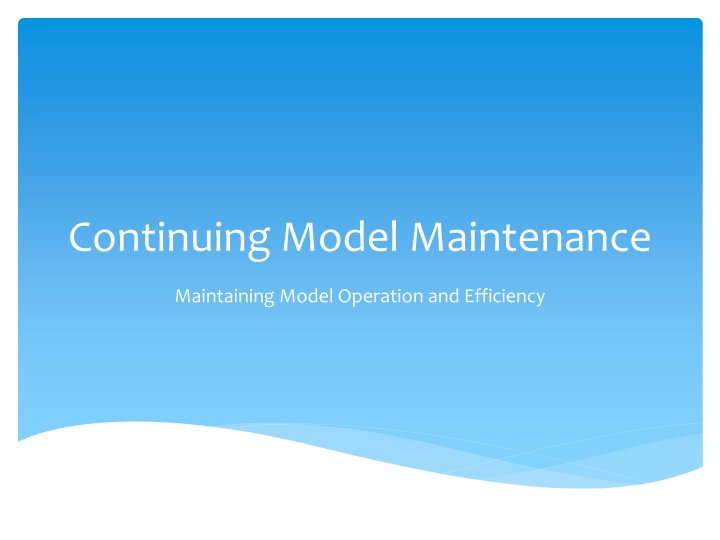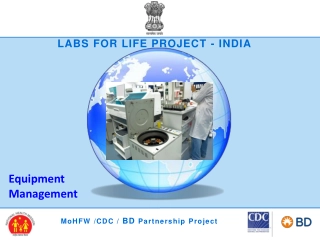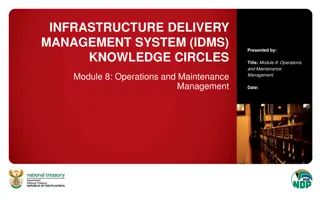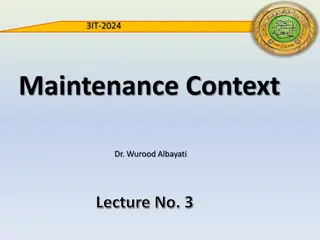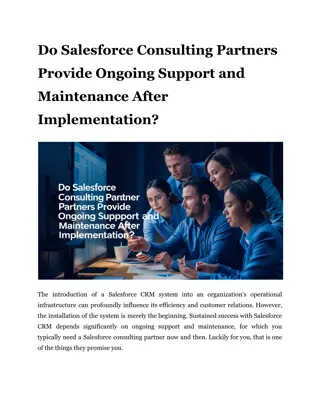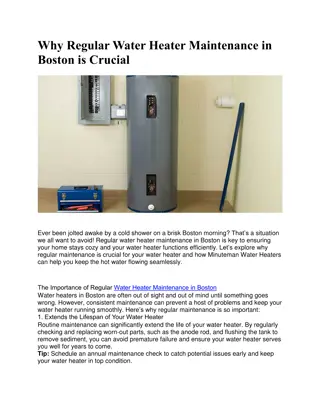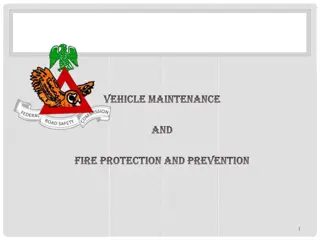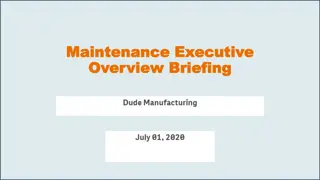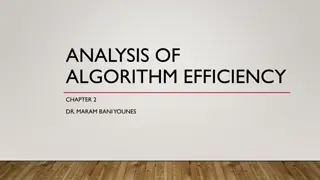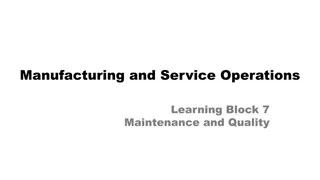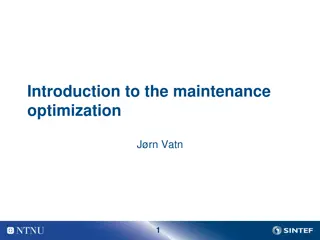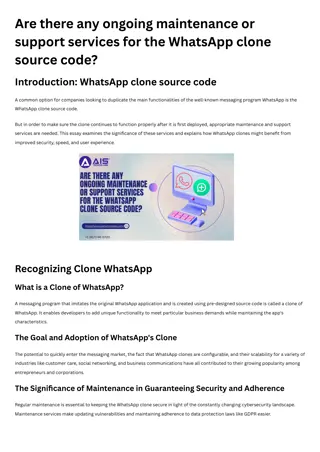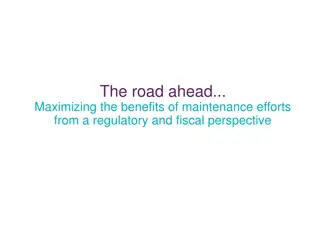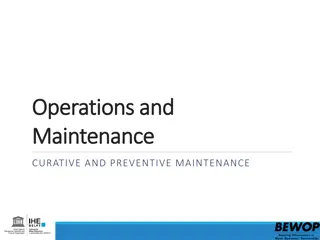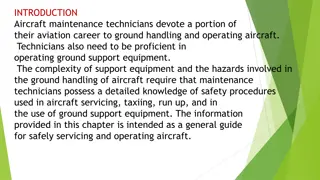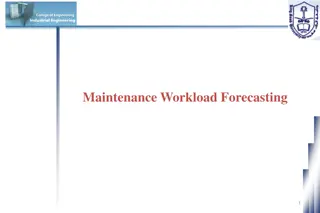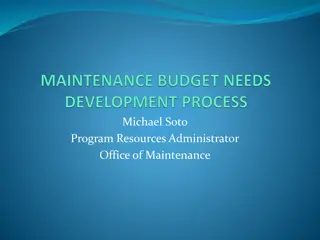Ensuring Model Efficiency through Ongoing Maintenance
The key to maintaining model operation and efficiency lies in ongoing maintenance, which involves adapting to changes in economic conditions, state population, and administrative priorities. Assessing model performance over time using decile analysis and SPSS crosstab comparison can provide valuable insights. It's important to focus on updating the model regularly, especially during changing economic periods.
Download Presentation

Please find below an Image/Link to download the presentation.
The content on the website is provided AS IS for your information and personal use only. It may not be sold, licensed, or shared on other websites without obtaining consent from the author.If you encounter any issues during the download, it is possible that the publisher has removed the file from their server.
You are allowed to download the files provided on this website for personal or commercial use, subject to the condition that they are used lawfully. All files are the property of their respective owners.
The content on the website is provided AS IS for your information and personal use only. It may not be sold, licensed, or shared on other websites without obtaining consent from the author.
E N D
Presentation Transcript
Continuing Model Maintenance Maintaining Model Operation and Efficiency
The importance of Ongoing Maintenance Changes in economic conditions Changing state economy Changes in state population Changing administrative priorities regarding the targeted population Changes in job center capabilities to serve particular types of claimants
Assessing Model Performance Over Time Decile analysis: Simple assessment technique Indicates model performance across the spectrum of scores AND mode importantly Indicates model performance for the targeted population Using stats software, produce a standard decile table (crosstabs in SPSS) using the actual profiling scores from more recent claims (based on completed benefit year end dates)
SPSS Crosstab 08/09 versus 11 Be sure to not get caught up in changes in the overall exhaustion rate. A 10% drop in the population exhaustion rate will likely correspond to a similar drop in rates across the decile table.
Our model is further focusing the targeted population on shorter term duration claimants already.
Things to Keep in Mind Model is built using completed benefit year data 1/1/2008 to 12/31/2009 filing dates in UT model example correspond to data that would be pulled no earlier than 1/1/2011 Model performance can deteriorate quickly, hence the 2 to 4 year coefficient update recommendations Particularly true during changing economic periods
Assessing Model Performance Over Time Feedback Loops Ongoing process of communication and follow up to review program outcomes Communication with Front Line Staff Feedback from referred claimants Claims data analysis Descriptive tables to analyze characteristics and claim experience of referred claimants Analysis of 9048 and 9049 reports Be sure to use this feedback when building new models!
Evaluation Process Recommended: Develop a standard and scheduled evaluation process
Recommendations for Model Updates Every 1 to 3 years Re-estimate coefficients Using more recent data, update model coefficients Generally a relatively quick and simple update data collection and clean up is most time consuming part Every 3 to 6 years Investigate need to overhaul model Prior model variables may still hold, but improvements may still be available More involved update: requires more time and effort Timing Can vary depending on economic fluctuations over the time period.
Process for Model Upkeep Recommended: Make model updates part of the standard, scheduled process. For example: Regularly scheduled model updates Every 3 years: Coefficient review and update if necessary Every 6 years: Model review and update including Model rebuild if a better model can be developed Coefficient re-estimation if a better model not available Most important benefit of a defined Model Update Process: Buy-in: Programmer time, for data pull & model implementation
Model Updating Process Re-estimating Model Parameters
Re-estimating Model Parameters (Coefficients) Duplicate original model (same variables) using more recent data Run a logistic regression using the same variable specifications on a more recent set of data Include a binary variable (1/0) to identify claimants referred to services Can help assess program impacts & control for impacts of services on claimants probabilities of exhausting Compare coefficients from the two models If there are significant differences, use the new model, otherwise old model can be retained Alternatively, you could estimate separate models for selected vs. not selected claimants & compare predicted probabilities
Re-estimation of Parameters Particularly if coefficients are significantly different, be sure to evaluate re-estimated model performance Use Decile table analysis, Hosmer-Lemeshow, Sensitivity and Specificity and ROC Curve analysis as necessary Ensure current variable specifications are still appropriate If evaluation of new model indicates poor performance consider building a new model from scratch
Model Rebuild When Model Performance OR Upkeep Schedule Dictates
Model Rebuild Collect data and develop a new model following the seminar steps and guidance Use the prior model s variable specifications as a starting point OR Start from scratch and ignore old model to avoid any bias in the development of the new model
Final suggestions Lookup tables for regression coefficients Simplifies implementation of re-estimated coefficients Automated evaluation & model update processes Data management and improvement Training and/or buy in from front line staff
